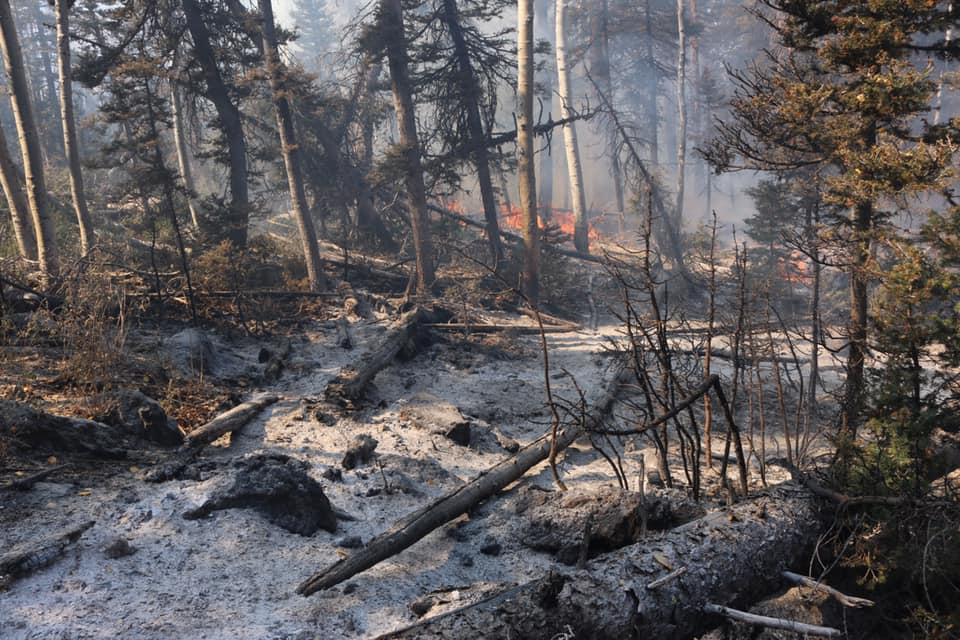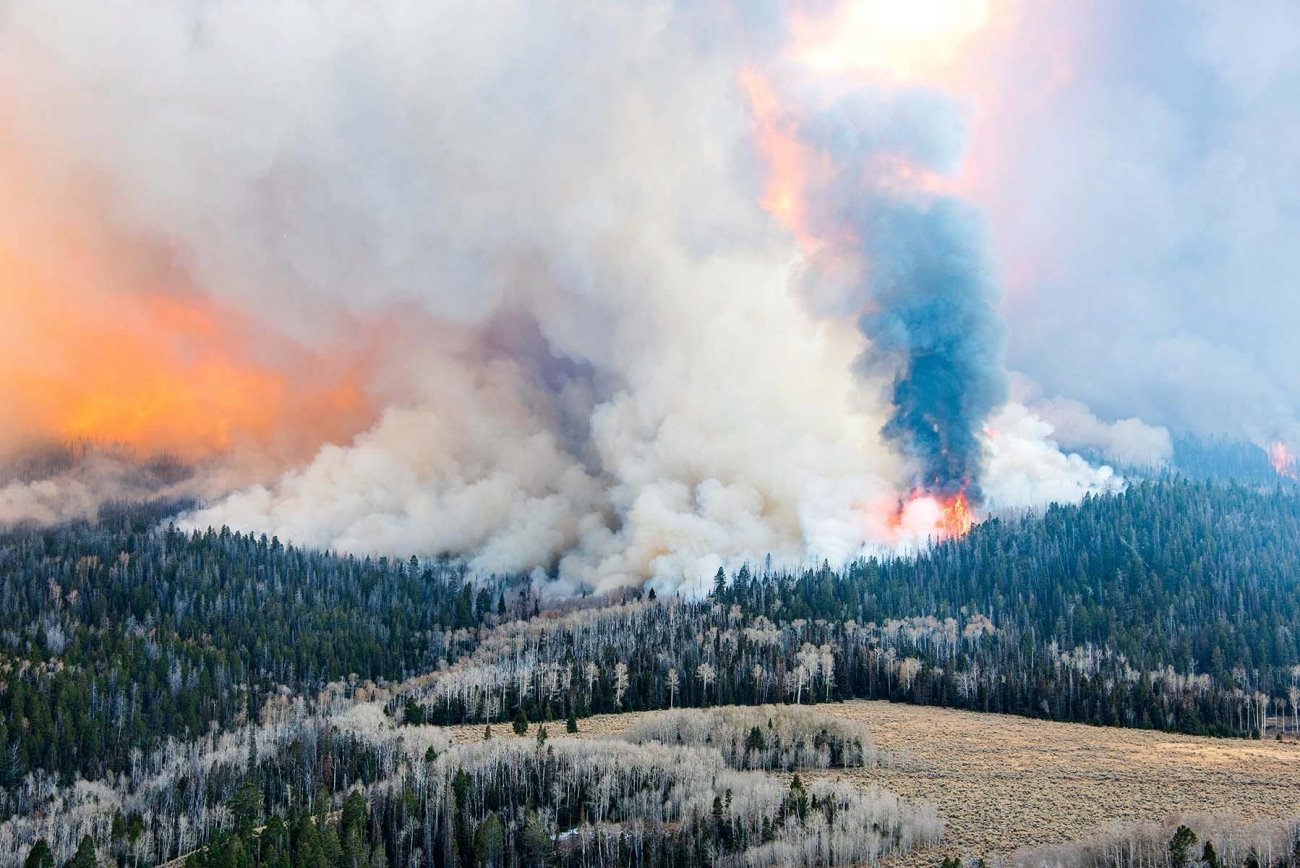ST. GEORGE — Two fires in central Utah, one ignited by lightning and the other started by fire managers, are being used to clear out fire fuels and underbrush while also promoting the health of the national forest in the area.

Burning 7 miles east of Beaver, near where this summer’s Skull Flat Fire blazed on the north side of Baker Peak, the Skull Flat 2 Fire has been burning for the last two weeks after being triggered by lightning.
As of Friday, the fire has burned across nearly 1,700 acres and is creeping along at a low intensity as it smolders through heavy dead and downed fuels, according to the Central Utah Fire Interagency.
The fire is being monitored instead of being immediately put out by firefighters. The blaze is fulfilling a burn that previous firefighting efforts had stopped with automatic suppression responses.
“For decades the Forest Service and other land management agencies suppressed every fire,” central Utah fire managers stated in one of last’s month’s updates on the Skull Flat 2 Fire. “Unfortunately, this resulted in decades and decades of a dead and down understory of brush and tree litter that serves as ladder fuels that then creates even more devastating wildfires.”

Not allowing wildfires to occur naturally is said to have led to densely-packed forest growth with flammable undergrowth that can result in massive and highly devastating forest fires.
The science of how to respond to wildfires has changed, fire managers say. Now, when a naturally-caused fire occurs in “the right place at the right time,” fire managers will monitor it and allow it to fulfill its natural role in ecosystem rejuvenation.
“These benefits include reducing hazardous fuels, protecting human communities from extreme fires, minimizing the spread of pests, insects and disease, while opening up the forest floor to allow wildfire travel paths and additional forage to game,” fire managers stated.
Smoke from the creeping, low intensity Skull Flat 2 Fire will be visible to the public, as will smoke from other nearby prescribed burns, according to the latest fire update released Friday.
No structures are threatened by the fire and no road or trail closures are presently in place near the fire. However, the public is advised to practice caution and heightened awareness while passing through the area.
The Skull Flat 2 Fire will be allowed to continue burning until a “season-ending event,” such as a storm dropping 6 inches or more or snow, occurs.

To the east of the Flat Skull 2 Fire on is the South Monroe prescribed fire burning in Piute County, located about eight miles west of Greenwich.
This fire, which actually consists of three different burn sites on Monroe Mountain, was ignited by fire managers of the Richfield Ranger District who oversee that part of the Fishlake National Forest. It was originally slated to burn between 1,200-2,000 acres.
The prescribed burn is also a part of the Monroe Mountain Aspen Ecosystem Restoration Plan, according to the ranger district. This process also includes thinning the forest through mechanical means as well as by fire.
The prescribed burning began earlier this month, with a giant smoke column created Thursday being visible across Utah and also parts of Nevada and Colorado, according to the Richfield Ranger District.
As of Friday, the Monroe Mountain prescribed fire project has treated up to 4,000 acres. Areas targeted by the burns include Langdon Mountain, Big Table and Bean Hill.
“Crews continued to monitor the project as fire continues to slowly burn pockets of vegetation within the units and along nearby forest roads and trails,” the ranger posted on Facebook Saturday. “An estimated 4,000 acres have been treated with a mix of hand and helitorch ignitions over the past seven days. The Fishlake National Forest strives to get important hazardous fuels work done when the risks of spread outside of planned units are low.”
Copyright St. George News, SaintGeorgeUtah.com LLC, 2019, all rights reserved.